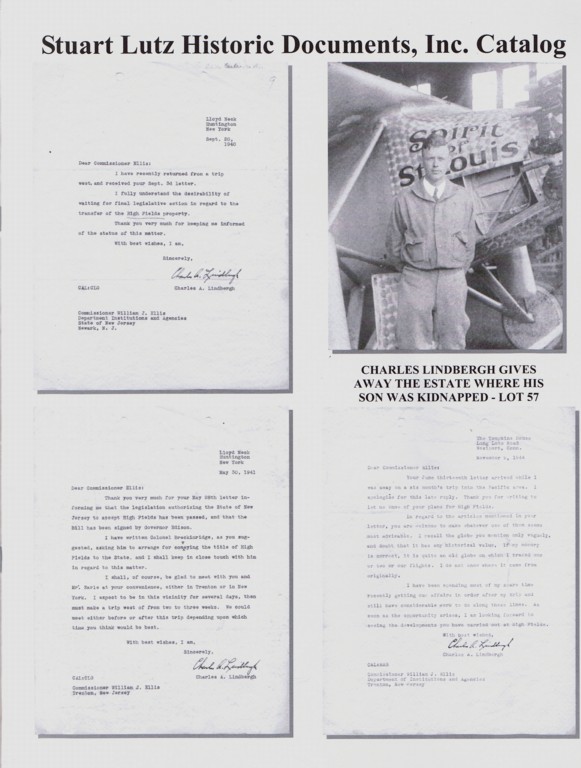Historic Documents from Stuart Lutz

Historic Documents from Stuart Lutz
By Michael Stillman
Stuart Lutz Historic Documents has issued a new catalogue of just what you would expect from a firm with such a name. The catalogue is untitled, but it is filled with documents from the past. Most come from personalities of fame and prestige (or notoriety), in most cases autographed by their illustrious writers. A few come from unknown people, but these are letters recounting interesting occurrences of another era. Stuart Lutz presents a wide selection of names you know, and at prices that won't break your bank. Here are a few.
William Henry Harrison had a long political and military career, culminating with his election as President in 1840. In his career, this son of a signer of the Declaration of Independence served as a governor, congressman, senator, ambassador, and general before reaching the plateau of the presidency. However, it was none of these accomplishments which keyed the popularity that enabled him to reach the highest office. What he was known for at the time was the victory he led against the Indians at Tippecanoe almost thirty years earlier in 1811. It resulted in his nickname of "Tippecanoe." After that victory in the Indiana Territory, Harrison stayed on in the old Northwest to fight the British during the War of 1812. Item 34 is a document from this critical time in his life, a payment order for iron dated November 26, 1812, signed by the future President. Priced at $1,250.
Charles Lindbergh dominated headlines in America several times during his controversial life. He was an American hero in the 1920s as the first person to fly solo across the Atlantic. By the early 1940s, his isolationism and perceived or maybe real sympathy for Germany before the war made him more of a villain. In between, however, was the most sensational event of his life, a tragedy over which he had no control. That was the kidnapping and murder of his infant son, and the trial that followed. His son was taken from his bedroom at Lindberg's High Fields Estate one night and never seen alive again. After the terrible event, the Lindberghs moved from the estate, but he did not wish to put it on the market, fearing the place would become some sort of ghoulish tourist attraction. So, he gave it to the State of New Jersey to become a home for troubled boys. Item 57 is three letters from Lindberg to Dr. Ellis, head of the state commission charged with handling wayward youth, regarding the acceptance of this gift. They were written during the early 1940s, the most controversial period of Lindbergh's life. Item 57 (pictured on front cover of this catalogue). $4,000.
Lindbergh wasn't the first celebrity to know such tragedy. Just a decade earlier, the President of the United States, Calvin Coolidge, lost his son. Calvin Coolidge Jr. was playing tennis barefoot when he developed a blister, which opened and led to blood poisoning. Medicine was not so advanced in 1924, even for the highest officers of the land, and young Calvin died a week later. Item 12 is a printed card from the President and his wife expressing gratitude to those who offered them their sympathies. $100.